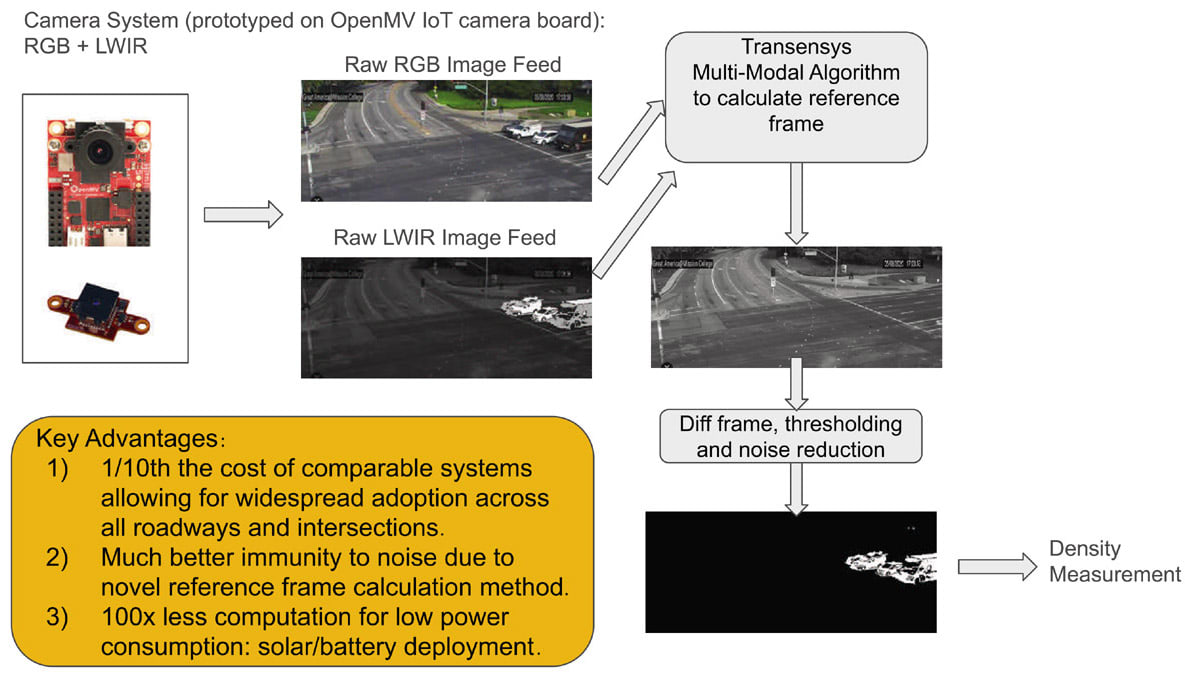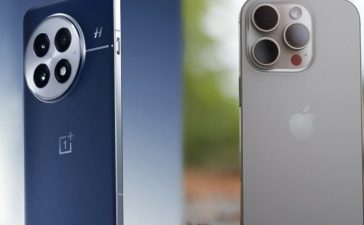Tyson Thomas and Aditya Kurupati
TransensysLLC
San Francisco, CA

The amount of time humans spend on roadways represents a significant portion of our daily lives. A significant percentage of this time is spent waiting at traffic lights. In the U.S. alone, around 306,000 hours are spent daily by U.S. residents at traffic lights. According to the INRIX and U.S. Bureau of Transportation Statistics, every 2.53 days, 1 metric ton of carbon emissions is released from cars idling at traffic intersections. The Transensys Multi-Modal Traffic Detection System aims to dramatically improve traffic congestion issues seen worldwide.
“When I was a grad student at USC I had an academic parttime position at NASA JPL and would often work late in the lab on my dissertation. Driving home at 1 am anxious to get to sleep, I was frustrated by having to wait at traffic lights when nobody else was around,” said Tyson Thomas, Founder, Transensys. “I started thinking it wouldn’t be too hard to enable the intersection to see me coming, triggering my green light before I even needed to slow down. I started thinking a lot about how to solve the problem and came up with the idea of the multi-modal algorithm,” he added.
Current systems to detect traffic are complex, costly, and inaccurate. The most common systems today are induction loop sensors. These are installed under roads, are tedious to maintain, suffer from errors, and are limited to only major intersections due to the cost. Attempts have been made to implement camera-based and long-wavelength infrared (LWIR) traffic detection. While these systems have been productized and deployed in a few areas, they have not seen widespread adoption due to cost and accuracy issues.
The patent-pending Transensys Multi-Modal Traffic Detection System is an attempt to provide widespread, low-cost, and accurate traffic measurement, dramatically reducing intersection wait times, thus providing huge benefits to people and the environment. The system is based on a key computer vision algorithmic innovation coupled with low-cost sensors (camera and LWIR). The core advantage the system has is based on a novel modal reference frame calculation algorithm.
Unlike complex systems today that rely on compute-heavy AI and object detection for traffic identification, the model algorithm flips the problem around. The problem is transformed into one that involves detecting a reference frame across video frames. Each pixel in a frame gets a reference value by finding the most common pixel value across adjacent frames. The algorithm is deceptively simple and extremely powerful. Once a reference frame is identified, complex object detection is no longer required. Each incoming video frame is simply subtracted from the reference frame, and a traffic density calculation can be performed. The computation cost requirements are reduced by over two orders of magnitude accordingly and low power consumption facilitates solar battery operation.

The software algorithm is paired with cost-effective IoT hardware components, including both a camera and long-wavelength IR. One of the disruptive features of this technology, according to Thomas, is its realization on a low-cost embedded IoT device, enabled by the lower computational requirements of the traffic detection algorithm. “We did not have the resources to build an embedded system from scratch, so we used COTS products that were readily available. These IoT systems are incredibly capable at low-cost, but the immaturity of the development environments required a lot of debugging to get things working properly,” he said. The retail cost (e.g., openmv.io) of these components is around $250 and can be reduced much further with mass production and custom embedded design.
The team has initiated discussions and outreach to the big players in the Intelligent Traffic Systems (ITS) industry. “We are hoping to license the technology rather than build and market an end product ourselves given the prohibitive barriers to entry in a strongly established ecosystem. Our prototype demonstrations of the capability on low-cost COTS IoT devices should alleviate concerns about technical risk, but we seek a more capable partner to bring the technology to market via a licensing deal. We envision a much more efficient traffic grid achieved by ubiquitous deployment of our ultra low-cost traffic measurement devices.”
For more information, visit here .











